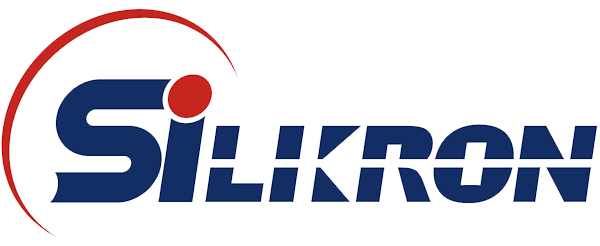

When it comes to the field of fast chargers, technologies such as MOSFETs, IGBTs, SiC and modules all play a key role to varying degrees to enable efficient, fast and reliable charging solutions.
MOSFET (Metal oxide semiconductor field effect transistor) :
How MOSFET works: The MOSFET works based on field effects, where the gate voltage controls the current path between the drain and source. When the gate voltage changes, the on-state of the current path will also change. In a fast charger, the MOSFETs are used as power switches to switch the flow of electrical energy by controlling the gate voltage.
Application details: MOSFETs are commonly used in DC-DC converters, inverters and charge control circuits in fast chargers. They achieve efficient energy conversion and can quickly switch to adapt to changes in the battery charging state.
IGBT (Insulated gate bipolar Transistor) :
Working principle: The IGBT combines the characteristics of MOSFET and bipolar transistors, and is suitable for power switches and converters of fast chargers. In the charger, the IGBT can withstand higher voltages and currents, and achieve fast switching, thereby controlling the flow of electrical energy. The principle is to regulate the collector-emitter channel by controlling the grid voltage to achieve high efficiency energy conversion.
Application details: IGBTs are commonly used in fast chargers for DC-DC converters and inverters, which are able to handle high voltages and currents while maintaining low on-off losses when switching at high speeds.
SiC (Silicon carbide) :
How it works: SiC devices are made of silicon carbide material with high energy gap and high electron saturation drift speed, so they have the characteristics of low on-loss, high temperature tolerance and high switching speed, so they are suitable for high power density charger designs. SiC MOSFETs and diodes are widely used in fast chargers.
Application details: SiC devices play a role in high power density chargers, they reduce energy loss, support high frequency switching, making chargers more compact and efficient.
MODULE (module) :
How it works: A module is a package unit that integrates multiple devices, usually including multiple MOSFETs, IGBTs, diodes, etc. The module is designed to implement complex power conversion and control functions.
Application details: The module is used for power conversion and current control in fast chargers. They are designed to make the conversion of electrical energy more efficient while integrating multiple devices in a compact space. Typically with high reliability, high power density and high temperature tolerance, it is suitable for high-power charger applications.
In summary, MOSFETs, IGBTs, SiC and modules play an important role in the field of fast chargers, which enable chargers to achieve fast, efficient and reliable charging through efficient energy conversion, accurate current control and fast switching characteristics, providing key support for the popularization and development of electric vehicles and energy storage systems.

In the field of charging piles, technologies such as MOSFETs, IGBTs, SiC and modules play a key role in enabling efficient, fast and reliable charging of electric vehicles.
MOSFET (Metal oxide semiconductor field effect transistor) :
Mosfets, such as electronic gatekeepers, play an important role in charging piles based on the principle of gate voltage control of the current path. When the gate voltage changes, it can quickly adjust the on-state of the current path. This gives it excellent capabilities in electrical energy conversion and current control.
In charging pile applications, MOSFETs are widely used in DC-DC converters and charge control circuits. They enable efficient conversion of electrical energy and precise control of current. Whether it is rapid current adjustment or high frequency energy conversion, MOSFETs can respond quickly by adjusting the gate voltage, providing a high degree of flexibility for the charging pile.
IGBT (Insulated gate bipolar Transistor) :
IGBT is a technology giant that combines the characteristics of MOSFETs and bipolar transistors. It plays a key role in the field of charging piles, like the commander of the current. The working principle of IGBT is that by adjusting the grid voltage, it can control the current flow between the collector and the emitter to achieve the conversion and control of electrical energy.
In charging pile applications, IGBTs are often used in DC-AC (DC-AC) inverters. This allows it to convert direct current energy into AC electricity to meet the charging needs of electric vehicles. The high voltage resistance and low on-loss characteristics of IGBT make it an ideal choice for high power charging piles.
SiC (Silicon carbide) :
SiC technology is like an energy magic, using its unique high energy gap and high electron mobility, showing the magic of efficient energy conversion. In the charging pile, SiC devices are used to improve energy conversion efficiency and reduce losses, just as a beam of light dispels the haze.
In terms of application, SiC devices are suitable for high power density charging piles. They are able to operate at high frequencies, reducing energy loss and bringing more efficient and reliable performance to charging piles.
MODULE (module) :
The module, like a multifunctional toolbox, integrates different devices together to form a unit of efficient energy conversion and precise control. In the field of charging piles, modules are like a sophisticated musical instrument that can play an efficient and stable charging melody.
The module is widely used in electric energy conversion and control circuit of charging pile. Through the modular design, the charging pile can better adapt to different charging needs and achieve an efficient, fast and reliable charging process.
In sum, the multiple applications of technologies such as MOSFETs, IGBTs, SiC and modules in the field of charging piles allow charging piles to provide energy for electric vehicles in a more efficient, faster and more reliable way. The combined effect of these technologies is driving the development of electric mobility, providing stronger support for a sustainable energy future.

在电池保护领域,MOSFET、IGBT、SiC以及模块等技术扮演着多元的角色,确保电池的安全性、稳定性和可靠性。它们为电池系统的运行提供了坚实的支持。
MOSFET(金属氧化物半导体场效应晶体管):
-工作原理: MOSFET作为电池保护的守护者,通过调控栅极电压来控制漏极与源极之间的电流通路。一旦电池电压超过安全范围,MOSFET可以迅速切断电路,防止过充、过放等危险情况的发生。
-应用详情:MOSFET常用于电池保护电路中,作为过压保护和过放保护的关键组件。当电池电压超出预设范围,MOSFET会迅速关闭通路,保护电池不受损害。
IGBT(绝缘栅双极型晶体管):
- 工作原理:IGBT在电池保护中充当守卫者,通过控制栅极电压来调节电池电流。它能够承受高电压和电流,一旦电流异常,IGBT可以切断电路,防止电池过流和过热。
- 应用详情:IGBT常用于电池保护电路中的过流保护和温度保护。一旦电池电流异常或温度过高,IGBT会中断电路,确保电池的安全运行。
SiC(碳化硅):
- 工作原理:SiC技术在电池保护中发挥作用,利用其高能隙和高电子迁移率特性,实现低导通损耗和高温耐受。它能够在高温环境下工作,为电池系统提供稳定保护。
- 应用详情:SiC器件通常用于电池保护中的高温环境,如高温充电或高环境温度条件下。它们能够在恶劣条件下保持电路的稳定性和安全性。
模块:
- 工作原理:模块将多个器件集成在一个封装中,用于实现电池保护电路的多重功能。模块可以集成MOSFET、IGBT等,以及控制电路和保护电路。
- 应用详情:模块在电池保护中常用于集成化的电池管理系统。它们可以实现电池状态监测、充放电控制和故障保护等功能,确保电池系统的稳定性和可靠性。
通过采用这些技术,电池保护系统可以实现多重防护,防止电池的过压、过放、过流和过温等危险情况。这些技术的多元应用使得电池系统能够在不同条件下保持稳定和安全,从而延长电池的使用寿命,确保电池系统的可靠性和性能。

在直流电机驱动领域,MOSFET、IGBT、SiC和模块等技术扮演着多元且关键的角色,为实现高效、精确的电机控制和驱动提供了强大支持。
MOSFET(金属氧化物半导体场效应晶体管):
MOSFET在直流电机驱动中类似于电流的指挥家,其工作原理是通过调整栅极电压来控制漏极-源极通道的导通状态。在直流电机驱动中,MOSFET可用作电机控制开关,通过控制通断状态来实现电机的速度和方向控制。
应用方面,MOSFET广泛应用于直流电机驱动器中的功率开关电路。通过快速的开关速度和精确的电流控制,MOSFET可以实现高效、平稳的电机运行。
IGBT(绝缘栅双极型晶体管):
IGBT在直流电机驱动领域担任着类似于电机的导航员的角色,其工作原理是将MOSFET的控制性能与双极型晶体管的低导通损耗相结合。在直流电机驱动中,IGBT用作高电压、高电流的开关,实现对电机的精确控制。
应用方面,IGBT通常应用于直流电机控制器中,通过控制电流通断来调整电机的速度和转向。其高耐压和高精度的电流控制使得电机驱动更加稳定和可靠。
SiC(碳化硅):
SiC技术在直流电机驱动领域表现如一阵清风,其高能隙和高电子迁移率特性有助于实现低导通损耗和高速开关。在直流电机驱动中,SiC器件用于提高电能转换效率和降低损耗。
应用方面,SiC器件适用于高功率的直流电机驱动,通过高效能转换和高频率开关,实现电机的高速运行和响应。其优越的性能有助于提升电机系统的效率。
MODULE (模块):
模块在直流电机驱动领域类似于电机的指挥官,将多种器件集成在一起,实现了复杂的电机控制功能。模块内部可以包含多个MOSFET、IGBT、SiC等器件,形成一个功能完整的单元。
应用方面,模块通常用于高性能直流电机驱动系统中。通过模块化设计,可以实现精确的电流控制、高效的电能转换和稳定的电机运行。
综合而言,MOSFET、IGBT、SiC和模块等技术在直流电机驱动领域充分发挥多元的作用,通过高效的电能转换、精确的电流控制和快速的开关特性,支持电机的高效、稳定和可靠运行。这些技术的应用有助于提升电机系统的性能和效率,满足各种应用场景的需求。

In the field of photovoltaic inverters, technologies such as MOSFETs, IGBTs, SiC and modules play a diverse and vital role, providing strong support for the conversion of solar photovoltaic power to AC power.
MOSFET (Metal oxide semiconductor field effect transistor) :
In photovoltaic inverters, MOSFETs play the role of power regulator, and their working principle is to control the on-state of the drain-source channel by adjusting the gate voltage. In the inverter, the MOSFET can be used to convert DC photovoltaic energy into AC energy, and realize the energy injection of the photovoltaic power generation system into the grid.
In terms of application, MOSFET is widely used in power switching circuits in inverters. Through high switching speeds and accurate current control, MOSFET enables efficient conversion of electrical energy, converting direct current energy generated by photovoltaic panels into AC electrical energy suitable for domestic and industrial use.
IGBT (Insulated gate bipolar Transistor) :
In the field of photovoltaic inverters, IGBTs act as power guides, and their working principle is to combine the control characteristics of MOSFET with the low on-loss of bipolar transistors. In the inverter, IGBT is used as a high voltage and high current switch to achieve the conversion of photovoltaic direct current energy into AC power.
In terms of application, IGBT is usually used in the DC-AC (DC-AC) inverter part of the inverter to convert DC photovoltaic power into AC power. Through precise current control and stable switching performance, IGBT ensures efficient operation of photovoltaic power generation systems.
SiC (Silicon carbide) :
SiC technology is like a beam of sunlight in the field of photovoltaic inverters, and its high-energy gap and high electron mobility characteristics help achieve efficient energy conversion and low loss. In inverters, SiC devices are used to improve energy conversion efficiency, reduce losses, and convert solar energy into usable electricity.
In terms of application, SiC devices are widely used in photovoltaic inverters with high power density. With high-speed switching and high frequency operation, SiC technology helps to achieve efficient energy conversion, reduce heat loss, and improve the efficiency of photovoltaic inverters.
MODULE (module) :
In the field of photovoltaic inverters, the module is similar to an intelligent control center, integrating a variety of devices, such as MOSFET, IGBT, SiC, etc., to form an efficient energy conversion and stability control unit. The module is designed to ensure that the PV inverter can achieve efficient energy conversion and reliable energy injection into the grid.
In terms of application, the module is commonly used in the DC-AC inverter part of the photovoltaic inverter. Through modular design, photovoltaic inverters can achieve efficient energy conversion, stable current control and fast response characteristics.
In summary, the multiple applications of MOSFET, IGBT, SiC and module technologies in the field of photovoltaic inverters achieve efficient conversion from photovoltaic DC energy to AC power. With precise current control, high-speed switching and low energy loss, these technologies provide strong support for the use of clean energy and promote a sustainable energy future.
Technologies such as MOSFETs, IGBTs, SiC and modules are also widely used in many other fields, and each technology plays a key role in different scenarios. The following is a description of their multiple applications in other fields:
MOSFET:
1. Power management and conversion: MOSFET is used in power management, DC-DC converter, voltage regulator and other circuits to achieve power conversion and voltage adjustment.
2. New energy vehicles: In addition to the field of charging piles, MOSFET is also used in the drive system of electric vehicles for battery management, control of motors and battery charging and discharging.
3. Industrial automation: In industrial control systems, MOSFET can be used to control various industrial equipment and machines to achieve accurate current and voltage control.
IGBT:
1. Renewable energy: IGBT is widely used in the field of wind power and hydroelectric power generation, converting renewable energy into electricity suitable for the grid.
2. High-speed rail and trains: IGBT is used in the traction system of high-speed trains to achieve efficient motor drive and energy feedback.
3. Welding machine: IGBT is used for high frequency switching in industrial and household welding machines to achieve precise control of welding current.
SiC:
1. Power electronic converters: SiC technology is applied in AC power grids, power transmission and distribution systems to improve power conversion efficiency and reduce energy loss.
2. High temperature environment application: The stability of SiC devices in high temperature environment makes it suitable for aerospace, military and oil and gas fields.
3. Electric aircraft: SiC technology is used in the power system of electric aircraft to improve energy conversion efficiency and range.
Modules:
1. Wind power generation: The module is used in the converter in the wind power generation system to convert the direct current generated by the wind generator into alternating current and inject it into the grid.
2. Power transmission and distribution: The module is applied to the switch control and power conversion in the power substation to ensure the stable transmission and distribution of power.
3. Industrial machinery: The module is used in industrial automation and mechanical control to achieve efficient energy conversion and stability control.
Technologies such as MOSFETs, IGBTs, SiC and modules are used in a wide range of fields, from power management to industrial control, from renewable energy to transportation, and they play an important role in different scenarios, driving technological progress and innovation in various fields.

